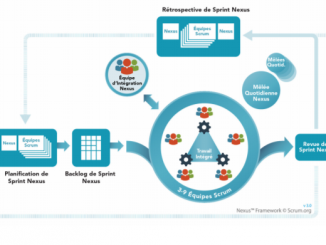
Agility has become a buzzword in the business world, but effectively implementing it remains a challenge for many organizations. Agile maturity assessment is an essential process to gauge where your company stands on its journey towards agility and to identify areas for improvement. In this article, we will explore what agile maturity assessment is, why it is important, and share some tips for success in this endeavor.
What Is Agile Maturity Assessment?
Agile maturity assessment is a process aimed at evaluating an organization’s ability to implement and embrace agile principles and practices. It measures how well an organization manages projects, teams, and processes according to agile values. This assessment can be conducted internally or with the assistance of external consultants.
Why Is Agile Maturity Assessment Important?
- Continuous Improvement: Agile maturity assessment helps identify areas in need of improvement, fostering a culture of continuous enhancement within the organization.
- Resource Optimization: It assists in optimizing the use of resources by identifying inefficient processes or practices that do not contribute value.
- Informed Decision-Making: It provides objective data for making informed decisions on how to progress towards greater agility.
- Strategic Alignment: You can ensure that your agile practices align with the company’s strategic goals.
Tips for Success in Agile Maturity Assessment
- Engage a Cross-Functional Team: Involve individuals from different departments and hierarchical levels in the assessment process to obtain a comprehensive picture.
- Remain Objective: Avoid biases and subjective judgments during the assessment. Data should be based on concrete facts.
- Utilize a Well-Established Assessment Model: There are several agile maturity assessment models, such as the Capability Maturity Model Integration (CMMI) or the Agile Maturity Model. Choose the one that best suits your organization.
- Collect Relevant Data: Ensure that the data collected is relevant to your context. Avoid drowning in unnecessary metrics.
- Develop an Action Plan: Once the assessment is complete, create a clear action plan to address areas requiring improvement. Assign responsibilities and set deadlines.
- Communicate and Share: Inform the entire organization about the assessment results and the actions taken. Transparency encourages engagement.
- Promote Training and Learning: Invest in training and skill development to support agility within the organization.
- Regularly Reassess: Agile maturity is an evolving process. Schedule regular assessments to measure progress and make adjustments as necessary.
Agile maturity assessment can be a powerful catalyst for transforming your organization into a more agile, responsive, and value-focused entity. By following these tips and fostering an agile culture, your company can thrive in an ever-changing business environment. Remember that agility is an ongoing journey, and agile maturity assessment is a crucial step in that journey.




Be the first to comment